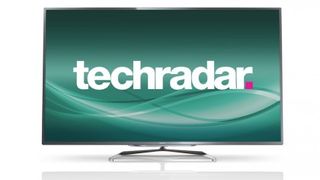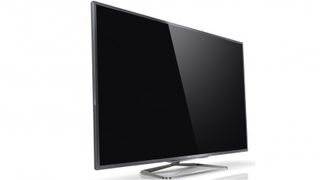Why you can trust TechRadar
First impressions of the 65PFL9708S's pictures are rather mixed. Though fortunately it turns out that most of the negatives we saw at first could be rectified by some careful manipulation of the intimidating roster of picture adjustments contained in Philips' onscreen menu system.
Not surprisingly given our enthusiasm for all things 4K, we started our tests by feeding the 65PFL9708S as much native 4K content as we could lay our hands on. But while the familiar rush we get from seeing so many pixels of image information was still there, it initially seemed to us that the sharpness looked forced in places - especially over areas of really fine detail, like leaves on trees or the grass on football pitches.
Whizzing through the picture options revealed that the set's Ultra Resolution tool was responsible for this slightly forced feel. Turning it off returned 4K/UHD sources to their natural state, leaving pictures looking more evenly balanced and pure. This made it easier to soak up the extra depth and colour resolution we've already come to know and love with 4K/UHD TV images.

It has to be said that the 65PFL9708S's native 4K images don't look quite as sharp and detailed without Ultra Resolution on as they have on some rival 4K sets (especially those from LG and Samsung). But the 4K impact is still obvious versus HD, and if you really want that bit more sharpness then feel free to go back to using the Ultra Resolution tool!
The 65PFL9708S is an extremely strong colour performer. Its tones look exuberantly vibrant and enjoy an extremely wide tonal range. This range is fully exploited in the subtlety with which colour blends are shown too, with both 4K and HD sources enjoying immaculate blends free of striping or patching.
Underpinning the colour palette and helping the set achieve its striking image punch and naturalism is a strong black level response. Dark scenes only suffer very slightly with low-contrast grey misting, leaving them looking credible and involving, despite there being a slight shortage of shadow detail in the darkest corners once you've adjusted the images to get the richest black colour.
Given the extra detail and precision you get with native 4K content, it's more important than ever that 4K LCD TVs try to remove the motion blur associated with LCD response time issues from their pictures. And, arguably, there's no other TV around that can achieve this goal more completely than the 65PFL9708S.
This is thanks to the astonishing power of Philips' new processing engine, which manages to interpolate enough frames of enough pixels if you employ the HD Natural Motion processing to remove all traces of judder and blurring.
However, using Natural Motion also introduces some new problems, such as blurry haloing around large moving objects and a rather flickery, cellophaney look to areas of very fast motion. Also, if you take out ALL judder from pictures using the higher levels of the processing, images start to look very unnatural. As a result of this we'd suggest you don't use the motion processing on anything higher than its lowest level. And for film viewing you may prefer to leave it off completely.
Also to be permanently left off when viewing native 4K content are the set's noise reduction tools, as these are completely unnecessary and just soften much of the 4K clarity away.
While the 65PFL9708S looks lovely with native 4K/UHD sources, though, as we've already noted normal consumers won't be able to experience this for themselves very often - if at all - right now, given the lack of 4K sources. So it's a relief to find the 65PFL9708S also doing a good job of upscaling HD content.
Initially, as with its native 4K presentation, the 65PFL9708S comes on a bit strong with its upscaling, pushing the sharpness too hard so that pictures start to look overly gritty. There's also a distracting glowing artefact over some areas of very fine detail that reminds us of a similar problem noticed with upscaled pictures on Samsung's UE65F9000 (read the 55-inch version's review here) if you leave that set's sharpness too high.
Thankfully the sense of noise in the Philips' image reduces greatly if you again turn off the Ultra Resolution feature and rein in the set's contrast presets. This leaves upscaled pictures looking crisper and denser than normal HD ones without giving you nearly as much noise to worry about.
While upscaled pictures when set up right do look good, the aggressive processing behind the upscaling doesn't always feel as adaptable and subtle in its workings as the upscaling systems of the recent 4K sets from Samsung and, especially, Sony. There's a feeling that Philips' processing takes more of a 'one size fits all' approach to adding in extra pixels.
Because of this, standard definition pictures tend to look rather noisy on the 65PFL9708S. But it almost goes without saying, really, that feeding standard definition content (especially standard definition digital broadcasts, with their frequently extensive digital compression artefacts) into a 4K/UHD TV is never going to be a great idea.
Finishing up this section with a look at the 65PFL9708S's 3D performance, the news is mostly very positive.
As we've seen in previous reviews, seeing passive 3D on a 4K/UHD TV is a revelation, as you get to lap up the brightness, stability and lack of crosstalk that's passive 3D's hallmark, without feeling the compromise of lost resolution and jagged edges seen on full HD passive 3D sets.

And the 65PFL9708S delivers on all these strengths with knobs on, with its ultra-rich colours and potent contrast performance joining the sheer enormity of the screen in doing a great job of underlining the impact of a good 3D picture's sense of space.
TVs like the 65PFL9708S feel like 3D's natural home, producing results good enough to make 3D worth the effort of donning the glasses.
There is one issue that diminishes the 65PFL9708S's 3D experience somewhat, though, and that's motion handling.
Without the Natural Motion system employed, moving objects in the 3D image can suffer a little more judder than we felt comfortable with. Yet engaging the Natural Motion circuitry to counter the judder causes other distractions in the shape of some rather obvious processing artefacts. Even if you stick with the processing's minimum power setting.
AV Technology Contributor
John has been writing about home entertainment technology for more than two decades - an especially impressive feat considering he still claims to only be 35 years old (yeah, right). In that time he’s reviewed hundreds if not thousands of TVs, projectors and speakers, and spent frankly far too long sitting by himself in a dark room.


